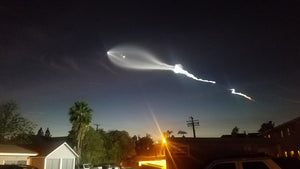Worldwide Space Schedule
Worldwide Space Schedule
Via Space.comAug. 2: Saturn at opposition. The ringed planet will be directly opposite the sun in Earth's sky around the same time that it makes its closest approach to Earth all year. This means it will appear at its biggest and brightest of the year. Saturn will reach its highest point in the night sky around midnight.
Aug. 8: The new moon arrives at 9:50 a.m. EDT (1350 GMT)
Aug. 10: A Northrop Grumman Antares rocket will launch the Cygnus NG-16 cargo resupply mission to the International Space Station. It will lift off from Pad 0A at NASA's Wallops Flight Facility in Wallops Island, Virginia, at 5:55 p.m. EDT (2155 GMT).
Aug. 10: A SpaceX Falcon 9 rocket will launch another batch of Starlink internet satellites from Vandenberg Space Force Base in California.
Aug. 11: Conjunction of the moon and Venus. The waxing crescent moon will pass about 4 degrees to the north of Venus. Look for the pair above the western horizon after sunset.
Aug. 11-12: The annual Perseid meteor shower, which is active from mid-July to the end of August, peaks overnight.
Aug. 15: An Arianespace Vega rocket, designated VV19, will launch the Pléiades Neo 4 Earth observation satellite for Airbus. The mission will lift off from the Guiana Spaceport near Kourou, French Guiana, at 9:50 p.m. EDT (0150 Aug. 16 GMT).
Aug. 19: Jupiter at opposition. The gas giant will be directly opposite the sun in Earth's sky around the same time that it makes its closest approach to Earth of the year. The planet will shine at its biggest and brightest tonight and will be visible all night long.
Aug. 20: Arianespace will use a Soyuz rocket to launch 34 satellites into orbit for the OneWeb internet constellation. The mission, called OneWeb 9, will lift off from the Baikonur Cosmodrome in Kazakhstan.
Aug. 20: Conjunction of the moon and Saturn. The waxing gibbous moon will swing about 3 degrees to the south of Saturn in the evening sky.
Aug. 22: The full moon of August, known as the Full Sturgeon Moon, occurs at 8:02 a.m. EDT (1202 GMT). This will also be a so-called "Blue Moon" because it is the third full moon in a season that has four full moons.
Aug. 22: Conjunction of the moon and Jupiter. The Blue Sturgeon moon will swing about 4 degrees to the south of Jupiter in the night sky.
Also scheduled to launch in August (from Spaceflight Now):
- A SpaceX Falcon 9 rocket will launch a Dragon cargo resupply mission (CRS-23) to the International Space Station. It will lift off from Launch Complex 39A at NASA's Kennedy Space Center in Florida.







